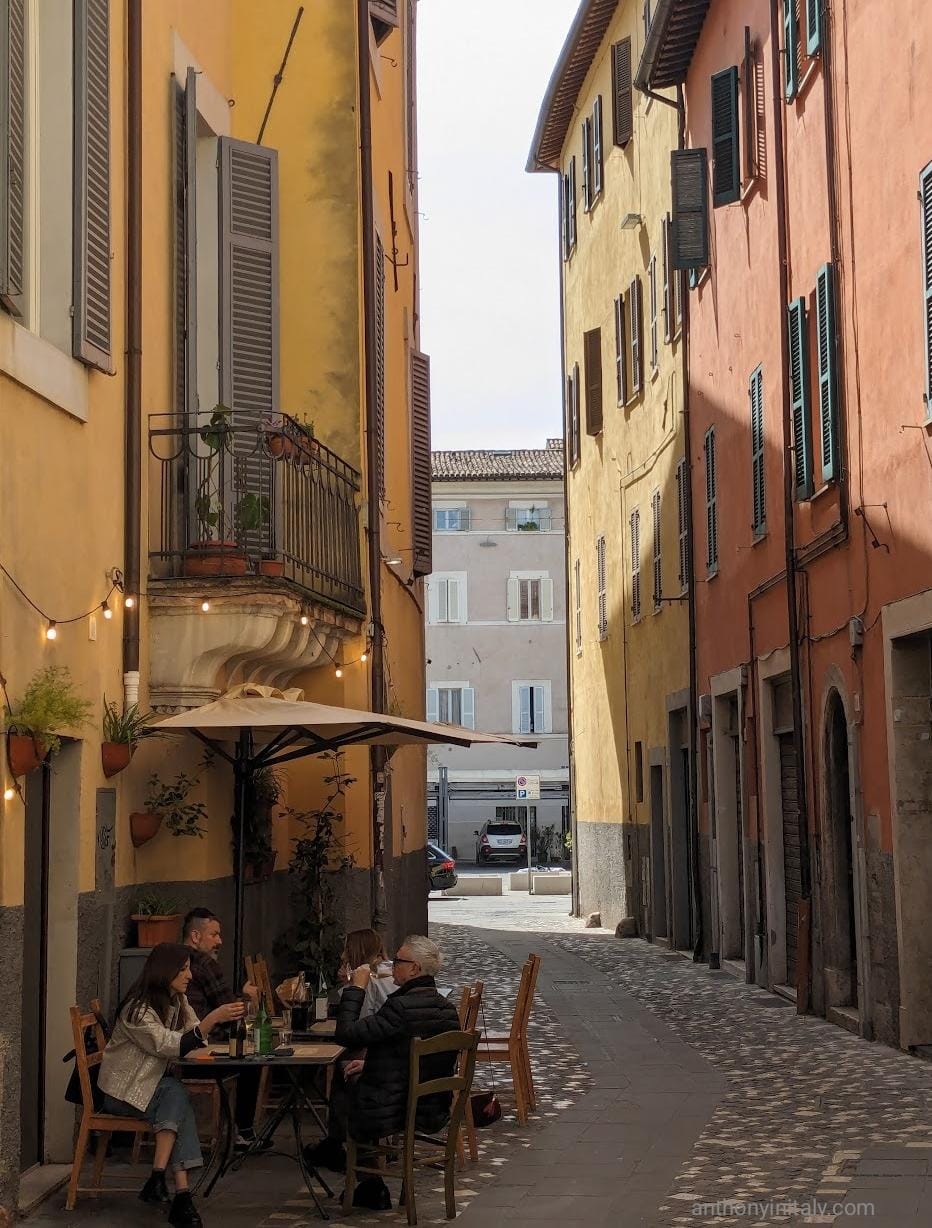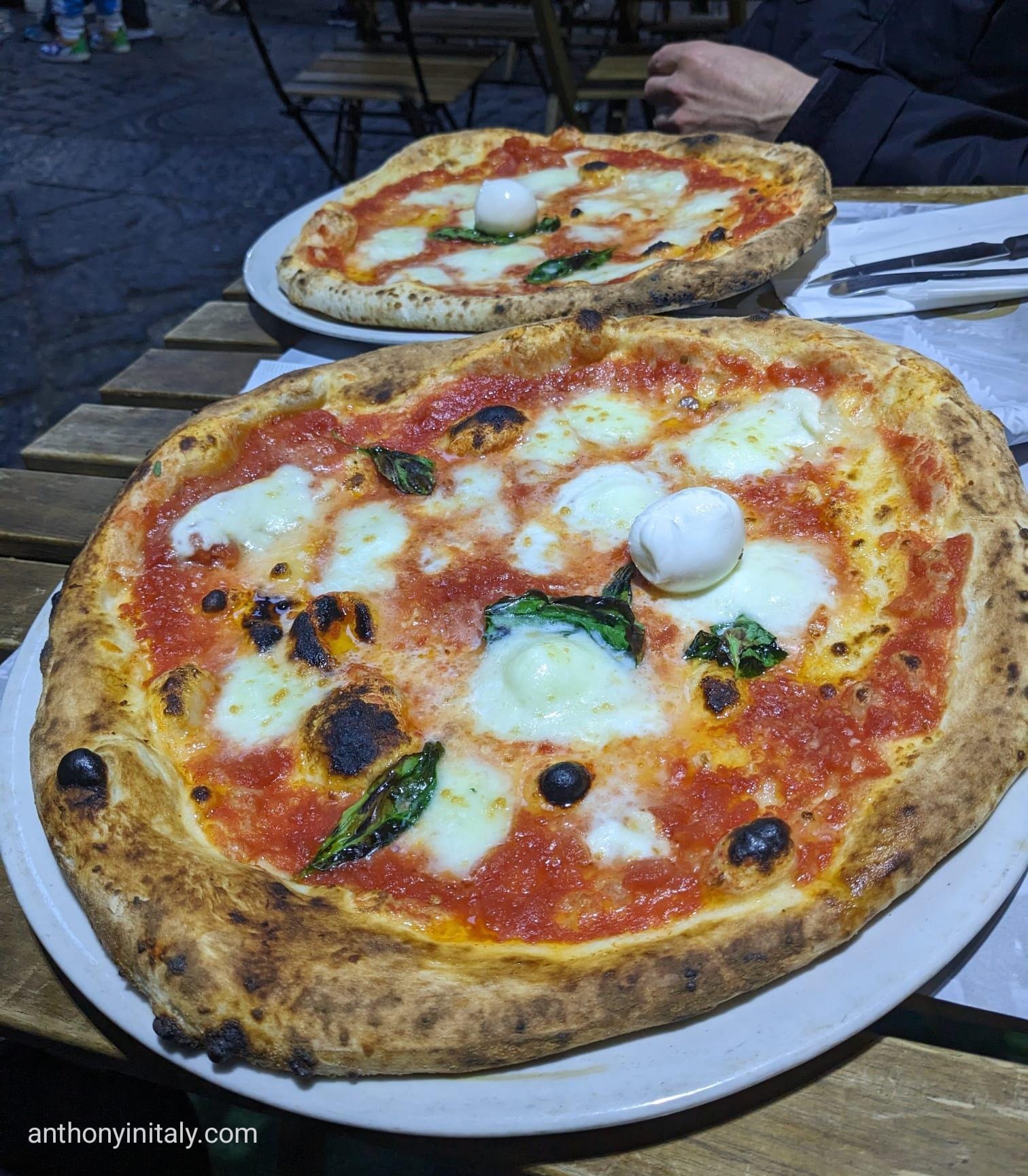12 Basic Italian Culture Tips You Should Know Before Your Trip
When I moved to Italy at 29 to get my Italian citizenship recognized, I didn’t just come for the paperwork. I came to live differently. Over the years, I’ve traveled to all 20 regions, helped hundreds of people plan their trips, and answered the same kinds of questions again and again.
This post isn’t about “doing Italy right.” It’s about understanding a few small cultural norms—so you’re not surprised when things don’t work the way they do back home. And so you can actually enjoy yourself instead of stressing over coffee or dinner reservations.
Let’s get into it.
Some of the links in this post are affiliate links. If you book through them, I may earn a small commission — at no extra cost to you. It helps keep this guide and site going.
1. Meal Times Are Sacred (and Limited)
In Italy, you don’t just eat whenever you feel like it. Restaurants open and close at set times. Lunch is usually from 12pm to 3pm. Dinner starts around 7pm. Show up at 4pm looking for a plate of pasta, and you’ll either find the kitchen closed or a tourist-trap menu of reheated food.

Some places stay open all day, but those are typically geared toward tourists—not locals. And the food usually reflects that. The exception is the “bar” – more on that later.
Also: pizza is mostly a dinner thing. Traditional wood-fired ovens take hours to heat up, and most pizzerias only do that once per day—for the evening service. You’ll see pizza offered at lunch in tourist areas, but that’s not how Italians do it.
2. Italian Breakfasts Are Light and Fast (But Not Always Standing)
Forget your hotel buffet or a diner-style breakfast. In Italy, breakfast usually means a cappuccino and a cornetto (a croissant-like pastry). That’s it. You’ll find this at a bar—which is what Italians call their coffee spots.

A lot of people eat al banco (standing at the bar), but it’s not a rule. Plenty of Italians sit down with friends or linger with their pastry. But it’s not a drawn-out thing. It’s usually sweet, light, and quick.
Also: cappuccino after noon? Italians typically switch to espresso (un caffè) once the morning’s over. But no one’s going to chase you out for ordering one at 3pm, despite what Instagram makes it look like. Do what you want—just know you’re breaking code.
3. One Pizza, One Person
Here’s a small thing that surprises a lot of visitors: when Italians go out for pizza, each person gets their own full pie (also, they don’t call it a pie). They’re not massive, and that’s just the default. It’s about the size of a medium pizza in the US, just a bit lighter.

That said, if you’re not that hungry and want to share, do it. Nobody actually cares. Again – despite what you might have seen on social media, there’s no national law against splitting a pizza. But yes, they’re portioned as a meal for one.
4. Know the Difference Between a Bar, Trattoria, and Ristorante
- Bar = coffee and snacks during the day, maybe aperitivo in the evening. Think quick bites, not full meals. Open all day.
- Trattoria / Osteria = more casual, often family-run, with traditional regional dishes. These are usually my go-to.
- Ristorante = tends to sound more formal or upscale, but don’t read too much into it.
That’s the thing—these distinctions used to mean more than they do now. Today, you can find fancy osterias and modest ristorantes. The name alone doesn’t tell you everything. What matters is how the place runs—and what kind of food they’re focused on.

If a place has “Bar – Ristorante – Pizzeria – Gelateria” all on one sign, it might not be the spot doing anything especially well. Look for places that specialize in something.
5. Menus Have a Structure—But You Don’t Have to Follow It
Italian menus are typically divided into:
- Antipasti – Starters
- Primi – First course, usually pasta or soup
- Secondi – Second course, usually meat or fish
- Contorni – Sides
- Dolci – Dessert
You don’t have to order every course. Get a primo and a side. Or a secondo and a glass of wine. Nobody cares, and there’s no pressure.
Pro tip: if a restaurant doesn’t offer an English menu, that’s often a good sign. Use Google Translate’s camera function to scan the menu—it works.
6. Water Isn’t Free
At restaurants, you’ll be charged for water. It comes in a bottle—naturale (still) or frizzante (sparkling). You can ask for tap water (acqua del rubinetto), but don’t expect it. It’s not a safety thing—it’s just not what people do.
7. Tipping Is Minimal (and Sometimes Exploited)
There’s no tipping culture in Italy like in the US. If you had excellent service, leave a euro or two in cash. No more is expected.
But beware: some touristy places might tell you, “service isn’t included”—even though you’ll see coperto on the bill. That’s your signal. They’re banking on the fact that you’re used to tipping, and they want a little extra.
8. Coperto? It’s a Thing. Don’t Fight It.
Coperto is a cover charge you’ll see on most sit-down restaurant bills. It covers bread, table service, etc., and usually ranges from €1.50 to €3.50 per person. It’s normal. It’s not a scam.
9. You’ll Need Cash—But Not for Everything
Cards are widely accepted in Italy, especially for purchases over €5–10. In fact, by law, every merchant is supposed to accept card payments.
But… this doesn’t always play out the way it should.
Some places—especially in certain cities (I’m looking at you, Naples)—might let the local in front of you pay by card, then turn to you and say, “Cash only.” They’re betting you won’t know any better because you’re a foreigner. But that’s nonsense. They take cards. They’re just choosing not to in that moment (so they don’t have to report the transaction and can evade taxes).
That said, you’ll still want cash for:
- City taxes at hotels or Airbnbs
- Small bars and neighborhood cafés
- Street food, snacks, or a bottle of water from the corner shop
- Using the bathroom at train stations (yep, most cost 1 euro)
Trying to pay for a €1.60 cappuccino with a card? You technically can—but at a mom-and-pop place, it’s not a great look. Bring coins.
Start your trip with around €200 in cash and withdraw more as needed from ATMs. Skip the airport exchange booths. Just use your debit card at a real bank ATM—it’s faster, cheaper, and way less annoying. Just make sure to decline the currency conversion that it offers (it’s a BS markup).

10. You’ll Probably Need a Reservation for Dinner
Even casual trattorias fill up—especially in summer, especially in cities like Rome or Florence.
If you know where you want to eat, make a reservation. It’s normal here. No one thinks it’s “fancy.” You can usually call, book online, or message via WhatsApp. Most places in tourist areas will speak enough English to make it easy.
11. Don’t Be Shocked When They Ask for Your Passport
If your hotel or Airbnb host asks for a photo of your passport, don’t worry. It’s not sketchy. It’s actually required by law. Hosts have to register all guests with the authorities.
If they don’t ask for your ID, that’s when you should start wondering.

12. Don’t Pay in US Dollars
I can’t believe I have to say this—but I’ve seen it happen. American tourists trying to pay in US dollars. No.
Italy uses the euro. Always.
If a place says they accept dollars, expect a terrible exchange rate. Better yet—just walk away. Use a card with no foreign transaction fees, or get euros from an ATM. That’s it. End of story.
Final Thoughts
Italy isn’t a place to rush through. It’s not about checking boxes or snapping perfect pasta photos. It’s about sitting down. Noticing things. Watching how people live. And adjusting your rhythm just a little.
These tips won’t make you Italian. But they’ll help you move through the country with less friction and more understanding. And that’s the kind of travel that stays with you.
By the way, if you’re planning to spend more than just a vacation in Italy, I made a free resource to help you get set up faster — the 🇮🇹 Italy Life Kit.
It’s a quick guide to the tools, apps, and tips I use to live here smoothly.
👉 Download your free Italy Life Kit

